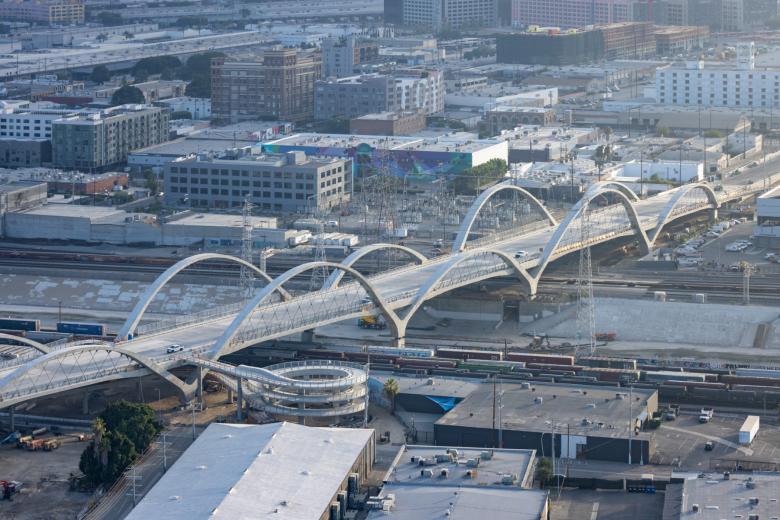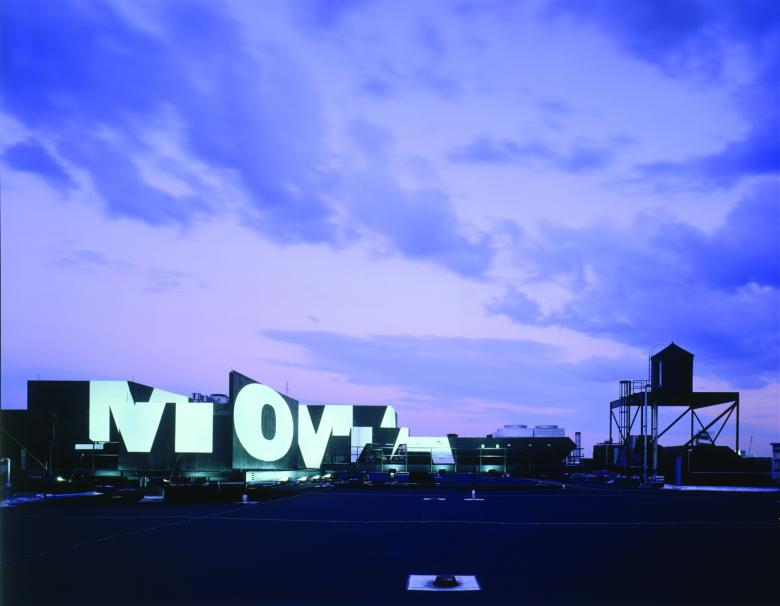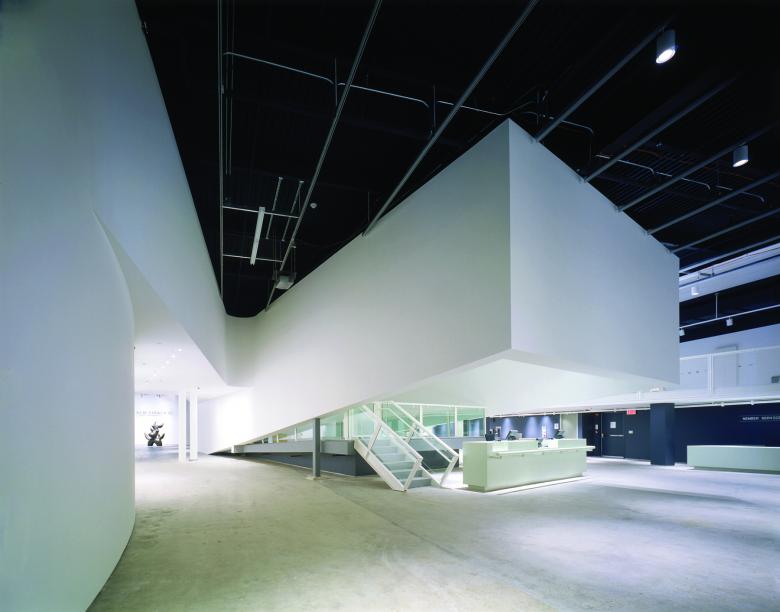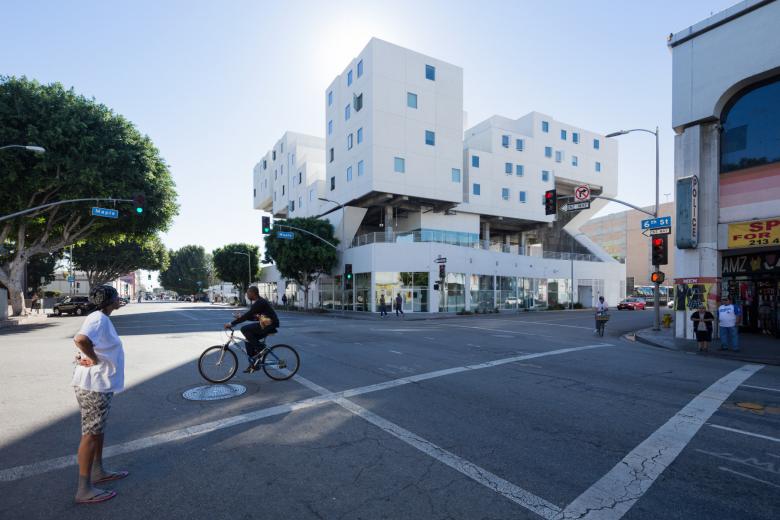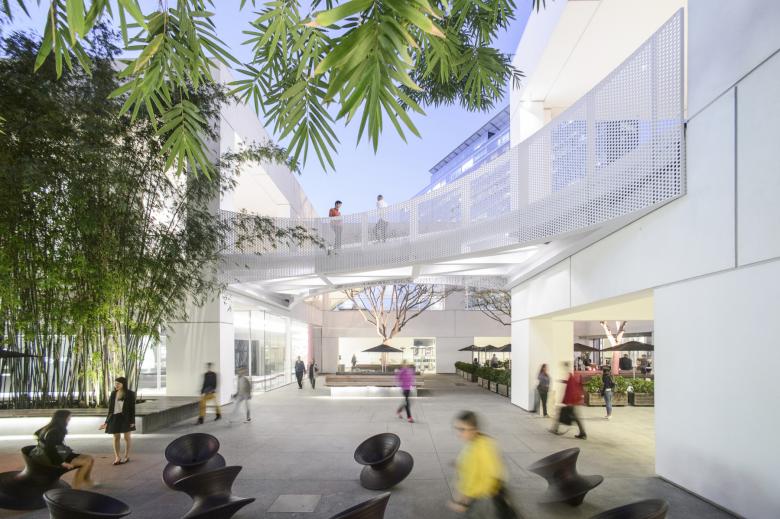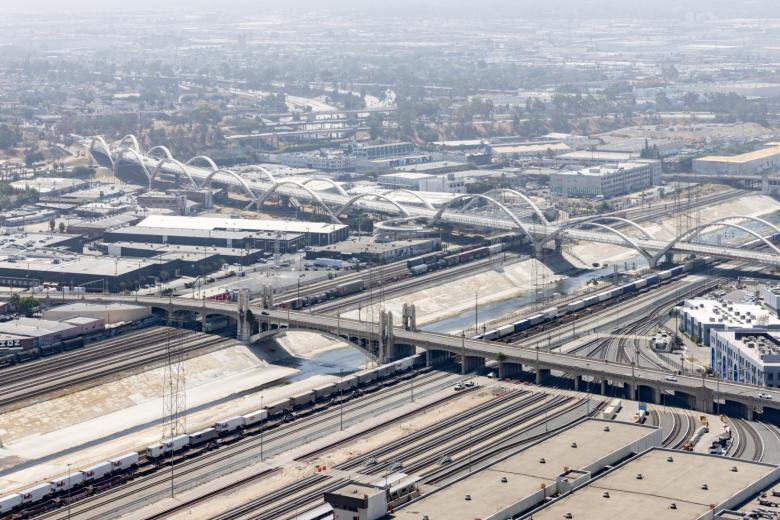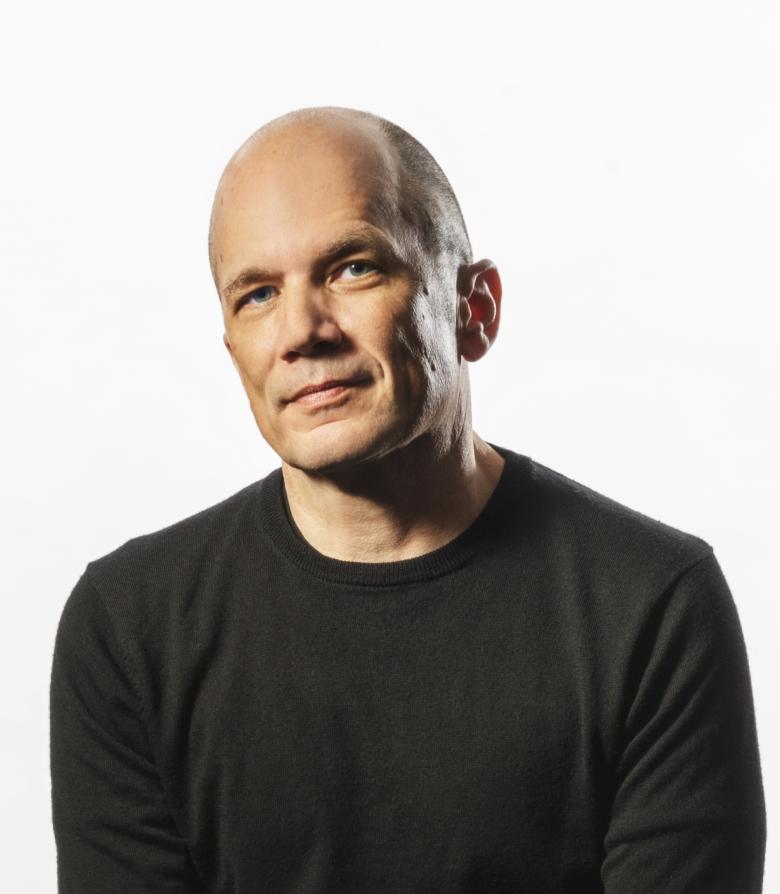Michael Maltzan is known for spatially adventurous buildings that, depending on where you start exploring them, are bold and subtle, erect and calm. Whether public or private and across all scales, they all share the impulse to gather an array of forces that ultimately inform and define their organizational and formal expressions. Vladimir Belogolovsky spoke with the Los Angeles architect recently over Zoom.
“Architecture has a very powerful capability to be at the center of connecting dispersed things,” he told me in our interview. “It can happen in many different forms, styles, and ambitions. But at its best, architecture becomes a medium between a community and an individual, between an institution and a larger culture around it. I am not interested in answering this question with a singular solution. I am interested in finding potential connections but leaving space for questioning and possibilities to arise and allowing answers to be constantly evolving.”
Michael Maltzan was born in 1959 on Long Island. His father, a medical supply salesman, moved his family with five kids often. It was a visit to his best friend’s house at the age of 12 while living in Syracuse, New York, that first triggered Michael’s interest in architecture. The house — open-plan, split-level, and very contemporary — was different from anything else in the neighborhood. It belonged to a product designer and had a small office with a drafting board. The friends often pretended to be architects by drawing plans with clipped-out people and furniture from magazines. “The idea that I could make my own world and that architecture was the means to create that physical manifestation of the world I saw resonated,” Maltzan explained.
Maltzan studied architecture at Rhode Island School of Design (RISD), where Rodolfo Machado headed the architecture department. While a student, he also worked on and off at Machado Silvetti. In 1985, following his graduation from RISD, he went straight to Harvard’s Graduate School of Design (GSD). Taking breaks to make money in order to continue his studies, he earned his master’s degree in 1988 and immediately moved to Los Angeles, where he felt more possibilities would be open for a young architect than on the East Coast. Besides, he felt a much stronger connection to the work of such LA architects as Michael Rotondi, Thom Mayne, Eric Owen Moss, and Frank Gehry. He described to me their architecture as radical and adventurous, more so than anywhere else in the world at that time. Gehry hired the graduate to work on the competition for the Disney Concert Hall, which the office won, and Maltzan ended up staying there for seven years as a senior designer.
Michael Maltzan Architecture was established in Los Angeles in 1995. Following the completion of several local arts centers and residential designs for prominent art patrons, the studio was commissioned in 1998 to design the UCLA Hammer Museum in Westwood, which led to a long-term relationship with the institution and subsequent expansion projects for them. One of his earlier high-profile projects was MoMA QNS in Long Island City, New York, which opened in 2002 and served for several years as the museum's temporary home while its main building in Midtown Manhattan was being renovated. Most of the architect’s projects have been realized in his adopted city. Among them are apartment buildings, museums, theaters, colleges, private houses, and, most recently, the new Sixth Street Viaduct, the giant photogenic structure that replaced the original 1932 bridge and united the Boyle Heights community to the east and the Arts District and Downtown to the west.
Michael Maltzan: You can look at architecture as a profession, and you can look at it as a discipline. The role of the profession of architecture and its relation to culture, economy, politics, and a business model is one part of architecture, while architecture as a discipline and the relation to its long history, particularly those moments that transformed it, is something entirely different and extremely important. I am at a point now when I believe in architecture’s capacity from a discipline standpoint, maybe more than I ever have in the past. At the same time, I am more skeptical about architecture as a profession than I have been in the past. I believe it is important to look at architecture and where its fundamental, lasting effect resides. It seems to me that much of architecture’s power lies in the discipline relative to culture and society. However, understandably, many of the debates defining challenges within the profession at this moment are driven by similar social pressures overall. Many legitimate questions are being asked by the younger generation, and the anxieties and profound doubts that are being felt about the profession are real and important. But that does not make architecture less relevant. What’s true is that the role of architecture is being recast and reinvented. That’s unnerving, but it is also inevitable. As a result, I hope architecture will come through this time with a reinvigorated relevance.
MM: Much of my work is about a composition of a series of elements that form and provoke relationships dynamically across space: the way a form can charge space. I am interested in producing a dynamic space that is not particularly formally “resolved” but has more of an “equilibrium” to it. In doing that, hopefully the building composition will arrive at a more dynamic and elastic relationship of form and space. One of the main spatial problems of our generation is that of simultaneity. We now occupy multiple spaces both physically and virtually, mainly owing to the ubiquity of the digital. All of that has an impact on how we think about and experience contemporary architectural space. And it is space, not form, that I think is where the more potent contribution exists for architecture to represent a particular moment in time and our place in it. To achieve that at a very practical level, I work in the design process primarily by building physical models. Simultaneity is the reason for me to work with physical models; I find digital models are only able to show what is directly in front of you, as opposed to being able to see all the parts and spaces of a project at once. The physical model allows you to hold a continuum of relationships between the spaces that you were just looking at, what is directly in front of you, and the spaces that you anticipate looking at next. To me, that’s a provocative and more equivalent way to understand better how we experience our world today. So, we make many models and many iterations at different scales but always with the same ambition to examine multiple relationships in a kind of simultaneous real-time way.
MM: The beginning of a project can come from almost anything. I am not so prescriptive about what the first move is. John Cage said something to the effect: when faced with the impossibilities of beginning, begin anywhere. It can be a sketch, an image, an element of the site, or something that somebody said casually. Once you find that starting point, a series of iterations inevitably begins in a more natural and continuous trajectory forward.
MM: There is truth to that, but the site is very important. One of the things I am looking for is to try and find the particular characteristics of a place. Here in LA, it may be the abstract, ephemeral, and fugitive characteristics of the type of light, the seemingly endless repetition of similarly scaled buildings and houses, the speed of movement on the highways, or the brutal forms of infrastructural elements. Those are very useful, and any one of these elements may jumpstart the connection to a particular design fantasy. Sometimes you grasp these ideas early on, and sometimes your initial sketches change 180 degrees compared to how you eventually understand the project. In any case, as an architect, your mind needs to be constantly involved and intertwined with your larger project. It is like writers who need to write every day whether they use those writings or not, because the moment you take a break, it is very hard to get back to it. So, it is important to work on a continuous project that is yours, which then is challenged and expanded by the specific task at hand, a project that is a part of your larger project but addresses specific needs, requirements, and ambitions.
MM: Sure, and if you were to walk around our office with me right now, you would see many dozens of models of various iterations and scales of projects that never were realized.
MM: That’s exactly right. They are a part of my “storehouse” of ideas and vocabulary, a part of a continuous project of working on ideas that can be rethought and reinterpreted.
MM: [Laughs] I come to the studio every day with anticipation of a breakthrough! Of course, we go through constant ups and downs. But I believe in evolution. I am restless. I hope that we are moving in the right direction. I feel I am now at a moment when I am revisiting some of the formative ambitions that I was focused on when I was just starting my practice; I am trying to rethink them at a different point of maturity. Some of those initial motivations were about trying to achieve a sense of directness in the work. Optimism and directness remain primary motivators in my work.
If you look at the current production of architecture, it is reasonable to ask the question, has architecture become too good? Whether it is a museum, a university building, or a little exhibition installation, there are so many seemingly extraordinary forms now. Everything seems so smooth and resolved. It is impressive what architecture as a formal practice has been able to achieve. One building after another is an aesthetic tour de force with incredible images. So many of these projects, even at the smallest scale, look more exquisite formally than anything we could’ve imagined 25 years ago. So, I have been asking this question: When everything is so “good,” what is the problem with architecture?
MM: I think we are moving forward but moving forward doesn’t mean that architecture is completely disassociated with its past. I think it is less important to look at forms in isolation and more important to look first at the deep ambitions and motivations for architecture throughout its history. One of the rules we have in the office is that whenever we begin the design process on a particular type of building or project, we are self-forbidden to look at precedents that are newer than 12 years. I might even increase that number to 20 years. It is a random line of demarcation, but it is challenging to look at the work of our moment critically. New forms and types of relationships can be discovered by reinterpreting projects from other epochs. That can help to bring something unexpected to our contemporary moment. How do you find ways to see things that we are accustomed to seeing differently? How do we move forward? If we only look at contemporary architecture, we become deeply self-referential and further isolated from architecture’s potential role in having a true cultural, social, political, and economic effect.
Articles relacionats
-
Isabel Zumtobel: 'We Believe in the Power of Design to Change the Future for the Better'
World-Architects Editors | 18.11.2025 -
-
-
